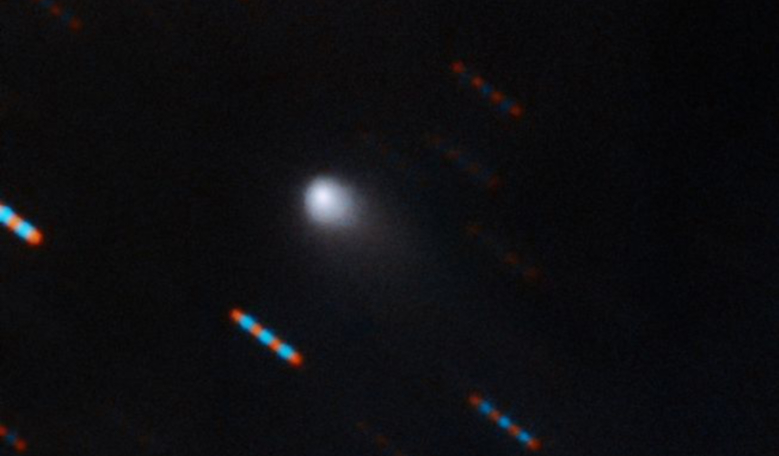A large, non-native icy body speeding through the Solar System is a hot topic in astronomy right now. Since comet C/2019 Q4 (Borisov) – possibly the first confirmed interstellar comet to visit the Solar System – hit the headlines last week, astronomers using the Gran Telescopio Canarias (GTC) in La Palma have now looked at the object’s reflected sunlight to see what it is made of and the results reveal, that the visitor is actually not that dissimilar from comets already found in our solar backyard.
While some scientists ponder the implications of this recent finding, others have been wondering whether we could reach this curious object with a probe to get a closer look at it, and the answer surprisingly is yes, but with some caveats attached.
Using a specialist simulation programme, called Optimum Interplanetary Trajectory Software (OITS), three researchers from the Initiative for Interstellar Studies, based in the UK, have assessed the technical feasibility of a mission to C/2019 Q4 (Borisov), using existing technologies available right now.
The software is used to support analysis for a variety of vehicles and missions, including spacecraft and launch vehicles but in this instance, authors Adam Hibberd, Nikolaos Perakis, and Andreas M. Hein, utilised OTIS to work out if a direct transfer from Earth to our icy visitor with flight durations ranging from 0 to 10, 000 days (27 years) and launch dates from 2015 to 2050 could be achieved.
To do this the trio had to factor in available propulsion methods, which severely limits the field as at present all work-horse rockets burn some sort of chemicals to get off the ground. For example, SpaceX’s Falcon Heavy rocket – the most powerful operational rocket in the world and therefore an obvious choice to make the trip – burns liquid oxygen and rocket-grade kerosene in order to clear Earth’s atmosphere.
However, with chemical propulsion as a means of rocket fuel, this also imposes limitations on how fast the craft can fly, so the team had to ensure that the simulation accounted for a change in velocity (known as Delta-V) coming out below 100 kilometres per second for whatever was flying to liaise with the comet.
The software shows that if a Falcon Heavy launch vehicle was to be used in this hypothetical mission, taking into consideration the above restrictions, it would have had to have been launched in July of 2018 to rendezvous with the object in October 2019.
For later launch dates, say the authors, the DeltaV (change in velocity) increases to levels where no existing chemical propulsion system would be able to get there before it’s gone again.
With that window of opportunity missed, the authors looked to other methods instead to get a craft to C/2019 Q4 (Borisov) in a reasonable timescale. Their simulations found that a flyby of Jupiter combined with a Solar Oberth manoeuvre could fling a craft at a reasonable enough speed to reach the comet in time.
An Oberth manoeuvre is a spaceflight manoeuvre, specifically an engine burn performed during the flyby of a celestial body. It uses the gravitational well of the Sun to give the spacecraft a boost; the closer the boost is applied to the Sun, the larger the gain in DeltaV. The manoeuvre at the Sun then flings the spacecraft outbound for its encounter with C/2019 Q4 (Borisov) via a close encounter with Jupiter.
For this method to work, and to reach C/2019 Q4 (Borisov) by 2045, the Space Launch System (SLS), up-scaled Parker probe heatshield technology, and solid propulsion engines, can be used to send a CubeSat-class spacecraft with a mass of 3 kilograms on a path to check out the interstellar tourist. The anticipated launch date of such an endeavour would be 2030.
2030 doesn’t seem such an unrealistic target, but it relies on SLS being ready on time. If C/2019 Q4 (Borisov) had been spotted earlier, something that new facilities like the Large Synoptic Survey Telescope (LSST) should be able to achieve in the next few years, then for any future visitors in the short-term, Falcon Heavy could be a viable option.
C/2019 Q4 (Borisov) is the second such interstellar object to be identified whizzing through the Solar System; the first, 'Oumuamua, was spotted in 2017. Given the (relatively) quick succession of these discoveries, it is not unreasonable to think that these two occurrences could be the start of regular visitations to our patch of space from out of town tourists. And for the next one, we might spot it in time to do something about it.
This work is available to read as a preprint here.











